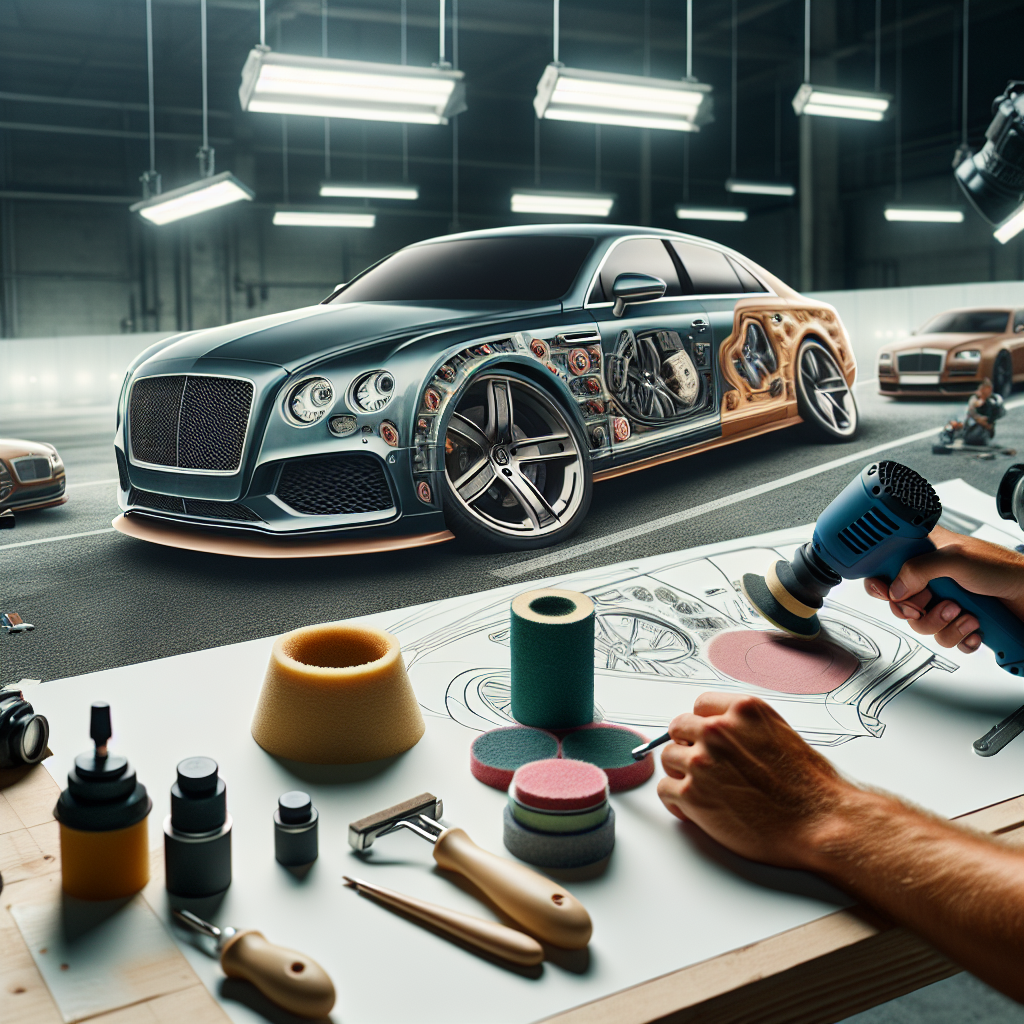Understanding Paint Correction: What Is It?
Defining Paint Correction
Alright, so let’s kick things off with the basics. Paint correction, in the simplest terms, is the process of removing imperfections from a vehicle’s paint. Think of it like a spa day for your car. Whether it’s scratches, swirls, or dullness, the goal is to restore that showroom shine that every luxury vehicle deserves.
In my experience, luxury vehicles often bear the brunt of exposure to harsh environmental factors. Whether it’s the scorching Texas sun or the occasional hailstorm, luxury vehicles can get a bit rough around the edges. A proper paint correction can make all the difference. It’s not just about looks; it’s about protecting your investment!
When I first delved into paint correction, I didn’t realize how many layers there were to this process. It’s an art form, really. There are different techniques and products to consider. Let’s dig into this and see why it matters, especially here in sunny San Antonio.
The Importance of Paint Correction for Luxury Vehicles
Protection Against the Elements
Here’s the thing: luxury cars are an investment. And just like any good investment, you should protect it. Living in San Antonio means dealing with intense heat and UV rays. Paint correction not only enhances the appearance of the vehicle but also serves as a shield against paint blisters and fading.
From my personal experience, I’ve seen cars that stayed outdoors without proper protection turn into faded shadows of their former selves. Imagine spending thousands on a luxury vehicle only to watch it deteriorate from the elements. It’s heartbreaking! Paint correction creates a protective barrier, ensuring your vehicle stays fresh and vibrant.
Also, let’s not forget the beauty of resale value. A well-maintained vehicle with a pristine paint job holds a better market value, which is crucial if you ever decide to sell or trade in. Trust me, it’s worth taking the time for paint correction!
Evaluating the Condition of Your Vehicle’s Paint
How to Inspect Your Car’s Finish
Before jumping into paint correction, you gotta assess what you’re dealing with. Grab a bright light and inspect your finish closely. I often recommend doing this in natural light. The last thing you want is to miss out on those pesky swirl marks or scratches hiding in the shadows of your garage.
I like to start by washing the car to remove any surface dirt, then I dry it thoroughly before my inspection. This gives you a cleaner slate to see how deep those imperfections really are. Don’t be shy; take your time here. Your luxury vehicle deserves it!
If you notice deeper scratches or oxidation, don’t panic! These are common issues, and knowing they exist is the first step toward making things right. Just keep in mind that some blemishes may require professional attention, especially for high-end vehicles where the paint is more delicate.
Methods of Paint Correction
Choosing the Right Technique
Now that you know what you’re up against, it’s time to pick your weapon of choice. There are a few methods of paint correction out there—machine polishing, liquid compounds, and even sanding for the more adventurous types. Each has its pros and cons, which I learned from trial and error.
I’ve had great success with rotary and dual-action polishers for removing moderate imperfections. The rotary polisher is super powerful, but it’s easy to burn through paint if you’re not careful. Dual-action polishers are more forgiving and are perfect for newbies—definitely a win-win!
If you’re delving into deeper scratches, wet sanding might be the route to go, but I’d only recommend this for those who feel comfy with it—not for the faint of heart! The right method will depend on the severity of the imperfections as well as the type of luxury vehicle you’re working with. Choose wisely!
Finishing Touches: Sealants and Waxes
The Best Products for Long-Lasting Shine
So you’ve done the hard work, and your car looks fantastic! But the job isn’t quite done yet. Now it’s time to lock in that shine. There’s a whole world of waxes and sealants out there to explore. Personally, I prefer using a good sealant for its durability.
Sealants form a long-lasting bond with the paint, protecting it from future dirt and contaminants. I usually apply it with an applicator pad, working in small sections for even coverage. This ensures your newly corrected paint stays stunning, even with the Texas heat bearing down on it.
Don’t sleep on wax, either. An excellent carnauba wax can give your ride that deep, glossy finish that turns heads. I find that a combination of the two—sealant for longevity and wax for depth—is the ultimate way to finish off your paint correction process.
FAQ
1. How often should I perform paint correction on my luxury vehicle?
It really depends on how you use your vehicle. If it’s parked outside often or used regularly, I’d recommend at least once a year. However, if you keep it in pristine condition or strictly for show, you may not need as frequently.
2. Can I do paint correction myself?
Absolutely! Many people do it at home, but you should definitely do your research first. There are plenty of tutorials and guides out there. Just make sure you feel comfortable with the tools—and don’t be afraid to ask for help if you’re unsure!
3. What is the average cost of professional paint correction?
It can vary widely, but you’re generally looking at anywhere from $300 to $1500 depending on the extent of work needed. It’s an investment, but one that pays off in the end!
4. How long does the paint correction process take?
The time can range from a couple of hours to a full day, depending on the complexity. If you’re going DIY, be prepared to spend more time as you’ll want to do it right!
5. Will paint correction remove all scratches from my car?
Most superficial scratches can be removed or greatly reduced, but deeper ones might be more stubborn. However, paint correction can dramatically improve the overall look!



